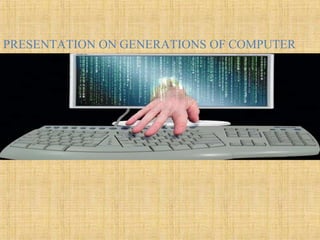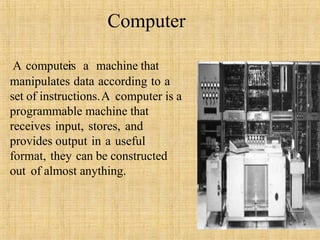The document summarizes the five generations of computers from first to fifth generation. The first generation used vacuum tubes and were large in size. The second generation used transistors which were smaller. The third generation used integrated circuits which were smaller still. The fourth generation used microprocessors on a single chip which were much smaller and faster. The fifth generation uses artificial intelligence and neural networks. Each generation brought improvements in size, speed, reliability and capabilities.












































